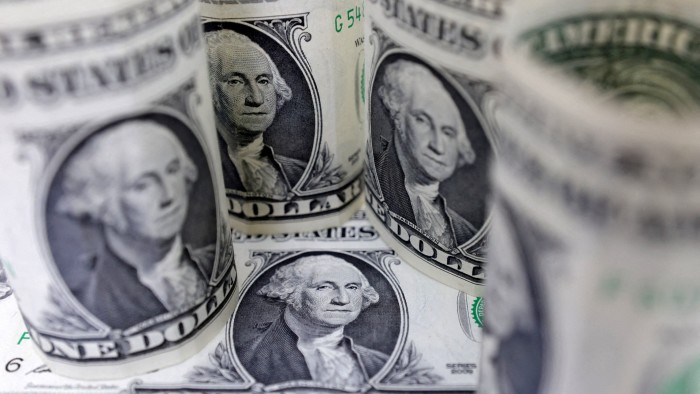Physical Address
304 North Cardinal St.
Dorchester Center, MA 02124
Physical Address
304 North Cardinal St.
Dorchester Center, MA 02124

Unlock the editor’s digest in free
FT editor Raula Khalaf selected his favorite stories in this weekly newsletter.
On Monday, the dollars went back to the lower and the US government bonds, as the investors were consolidated with increasing warnings on the stability of the country’s Debt Veg.
In the beginning of April, Donald Trump’s “Release Day” tariff blitz was reduced by 0.6 percent of the dollar underneath three years.
The Blue-Chip S&P 500 index was submerged even after an ISM survey of purchases in the manufacturing sector, weaker than expected at 48.5 for May 48.5, which separates the expansion and contraction. After the stock benchmark, the foundation was back somewhat for trading less than 0.2 percent a day.
Gordon Shannon, funding manager of Twenty -Four Asset Management, says ISM data has provided “the impact of tariff uncertainty on US growth.”
Francesco Pesol, the front of ING, says the survey is adding the pressure on “soft” demand and trade excitement for US Treasury, adding the “already very weak dollar speed”.
Treasury Secretary Scott Basent Markets have to be removed to reassure markets, due to the decline in the price of the debt after the first business, the yield of the 5 -year -old US government has risen to 5.7 percent points, and the market has been overwhelmed by the increasing precautions on the durability of Debt.
JM Morgan Chase Chief Executive Jamie Dimon warned on Friday that the US bond market could “crack” the weight of Washington’s growing debt.
The ISM survey was a weaker display compared to the previous month and the fourth fall on the index was the unexpected trade war in Trump, considering the world’s largest economy.
The survey, based on the supplier of the survey, has risen to the highest level since June 2022, as the survey also released a slow distribution.
“The confusion of trade policies is making it close to the source of the product,” said Joe Bruceuellas, chief economist of the tax and consulting firm RSM US. “
“It tells me that we can be obstructed in terms of production, which causes a deficit.”
Imports have also decreased sharply and producers reduce the lists that they collected for several months before the new trade tariff.
Economists warned that these reduced reserves have only provided a temporary IELD to the increasing import cost. City economist Veronica Clark says, “You can only rely on this frontloading for so long.”

The US metal prices have also risen on Monday after Trump’s announcement on Friday that the United States will impose 5 percent tariff on steel and aluminum imports, twice the previous layer that its administration had in March. The new tariffs are set to come into effect on June 4.
Price for aluminum has risen, the regional premium of the aluminum has been distributed 54 percent to the US midwest. The more muted reaction to the steel futures traded in the comx was that 8 percent increased in trading on Monday morning. US steel producers Newcoo and steel mobility have increased sharply, both have increased by more than 10 percent.